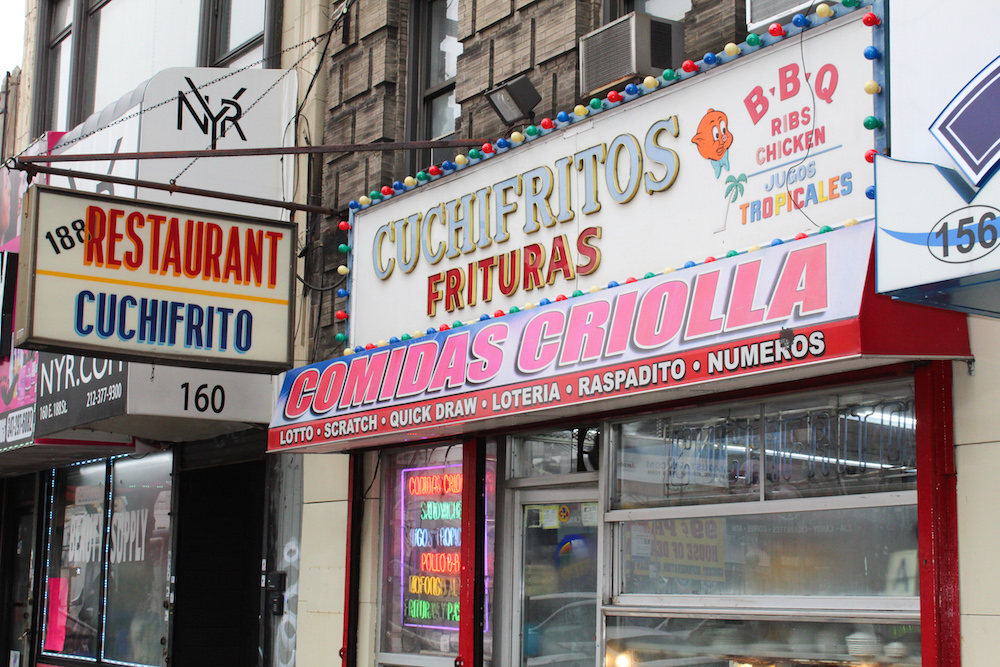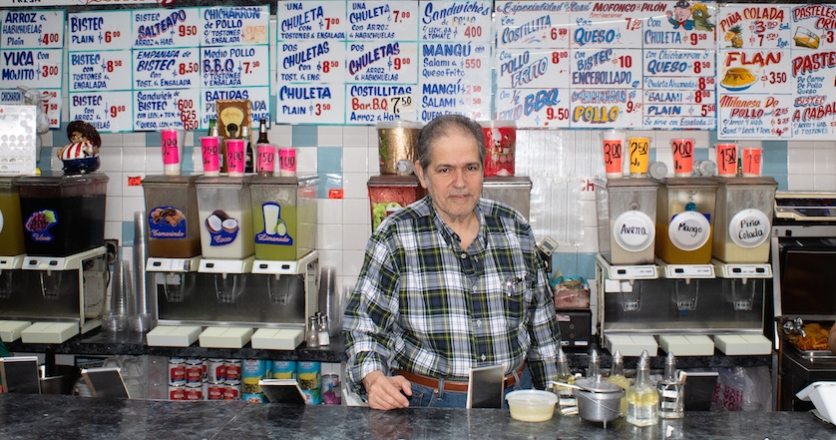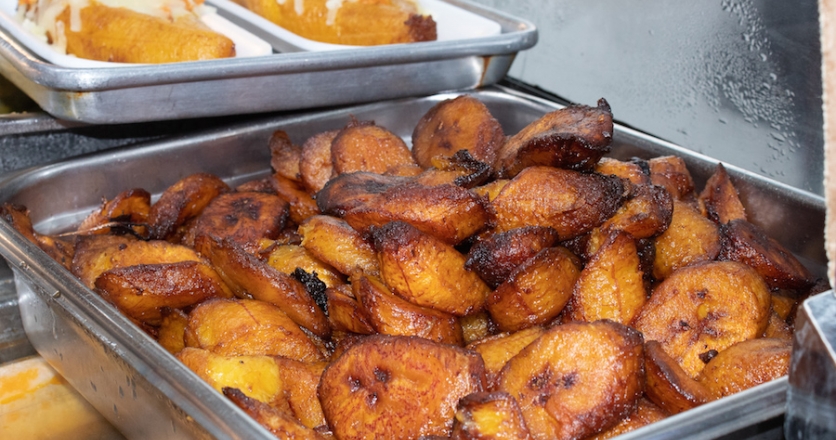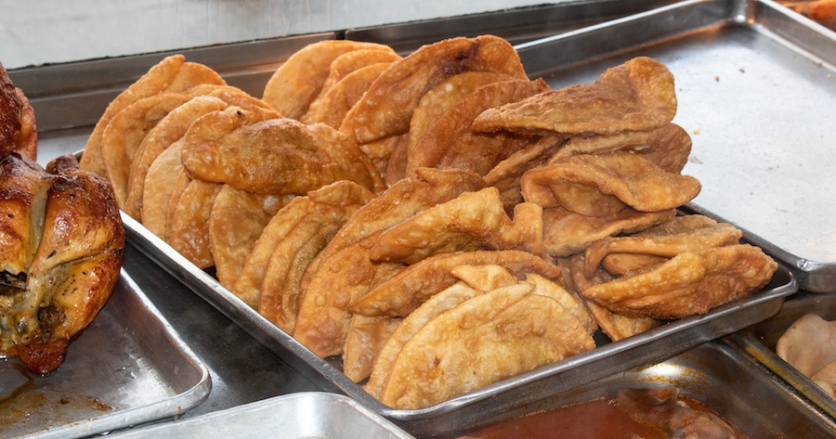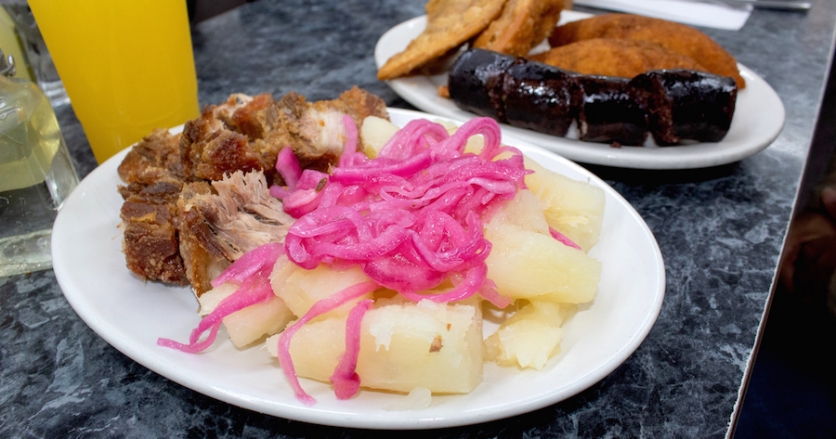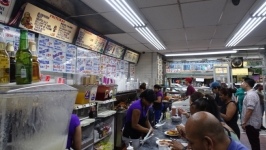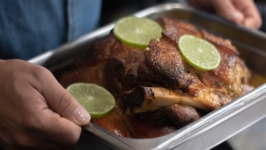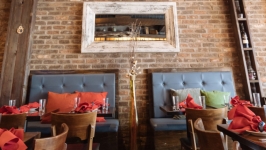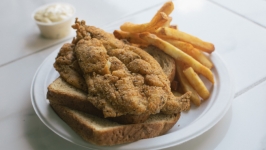No-frills Fried Foods Stand Out At 188 Bakery Cuchifritos
When the late Anthony Bourdain stopped by 188 Bakery Cuchifritos during a Bronx episode of his television show “Parts Unknown,” the world-renowned chef and food critic declared the small restaurant in the Fordham section of the Bronx to be the “center of the pork universe.” What followed were new customers from all over the world who wanted a taste of traditional Puerto Rican food.
But if you’re from the area—or from anywhere in the Bronx, really—you didn’t need a cosign to convince you that 188 was the spot when you were looking for no-frills fried finger foods. The restaurant has had a loyal following since Jose Coto began serving the community in 1982. “We make affordable food for the Hispanic community,” says Jose about how he’s managed to stay in business this long while the neighborhood around him continues to change. “They’ve been taking care of me all of these years and I take care of them.”
The old-school lunch counter has remained largely unchanged since it opened. The hand-painted menu signs, which are entirely in Spanish until this day—Jose refuses to change anything about the shop regardless how much the clientele changes—are over two decades old and appear to be kept around more for aesthetic purposes rather than serving any real function; locals order from memory and visitors point to pictures on their phones and ask for “whatever Bourdain was eating.”
In Caribbean countries, cuchifritos or fried pork parts—the name derived from cuchí, short for cochino (pig) and frito, meaning fried—are traditional fried fast-food items that are usually sold from small street carts. “It was a part of the daily routine back home,” remembers Jose. “You’re on your way to school in the morning or on your way home from work and you might pass by a cuchifrito and grab a bacalaito (codfish fritter).”
When Jose first arrived in NYC from Cuba in the early ’60s, cuchifritos shops could be found all over the city with their colorful awnings and signage decorating the streets of Puerto Rican and Dominican neighborhoods. The small hole-in-the-wall establishments specialized in selling fried parts of the pig as well as other fried fast-food items but slowly expanded their menus to include more popular dishes for the less adventurous, such as rice and beans and beef stew. The locations then grew to make space for more seating. Eventually, traditional cuchifrito items took a back seat to the more complete sit-down meals and sometimes disappeared off the menu altogether.
188 is one of the few true cuchifrito spots left. You can stop by any time of day and grab a plate of pig ear, pig tongue and stomach. There’s also the morcilla (blood sausage) prepared from scratch in-house. Jose describes the process as “not too difficult if you know how to do it,” but it’s laborious enough that other restaurants shy away from adding to their menus.
The process for the morcilla at 188 starts the night before when the pork is cooked before being ground up the next morning. It is then combined with a spice prepared in-house by peeling and chopping onion, garlic, bell pepper, cilantro, and hot chili. Pork blood is then added. This mixture is then put inside a casing and “that’s it!” as Jose puts it.
There is also the chicharron, one of the most famous fried dishes, a perfect tango between crispy skin and soft, flavorful fat. It’s much simpler to prepare than the morcilla but just as tasty. “We get it from the butcher, wash it, season it and cook it. There’s no secret to it. Other people like to boil it or deep-freeze it; they reheat it. No, we just fry it and send it directly to the table,” says Jose.
You can also find other fried items, such as rellenos de papa, deep-fried mashed potato croquettes filled with ground beef and seasoning, and alcapurrias, starchy meat-filled fritters housed in a dough that’s crunchy on the outside and soft on the inside. The latter is one of 188’s most popular items, selling up to 800 pieces per day.
Jose has been working in cuchifritos since the age of 15, when his father and uncles owned several locations throughout the city, but he can still be found behind the counter almost any every day of the week. His son, Jose Coto Jr., is also in the business with plans of taking over. When exactly? That’s anyone’s guess.
“I enjoy coming to work. I feel like I have good health. I don’t have to stay home,” says Jose about his work ethic. “When you stay home, you get sick.”
When asked when he will retire, Jose responds, “I retired 10 years ago.”
158 E 188th St The Bronx, New York, 10468


